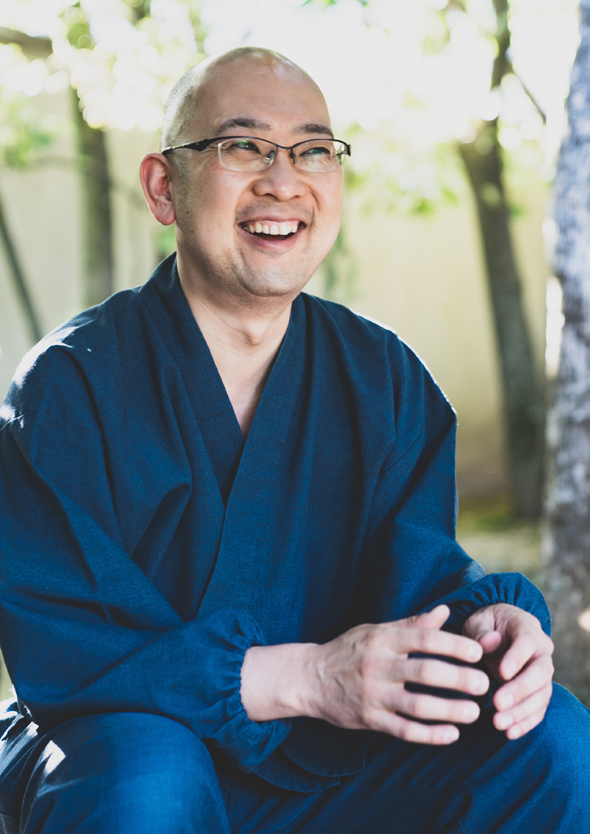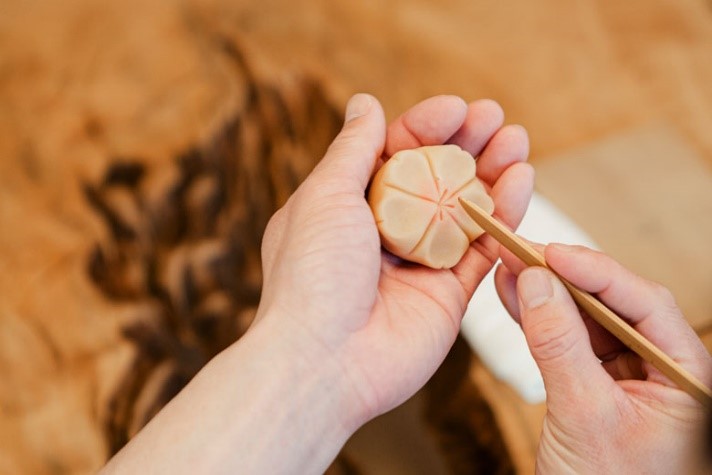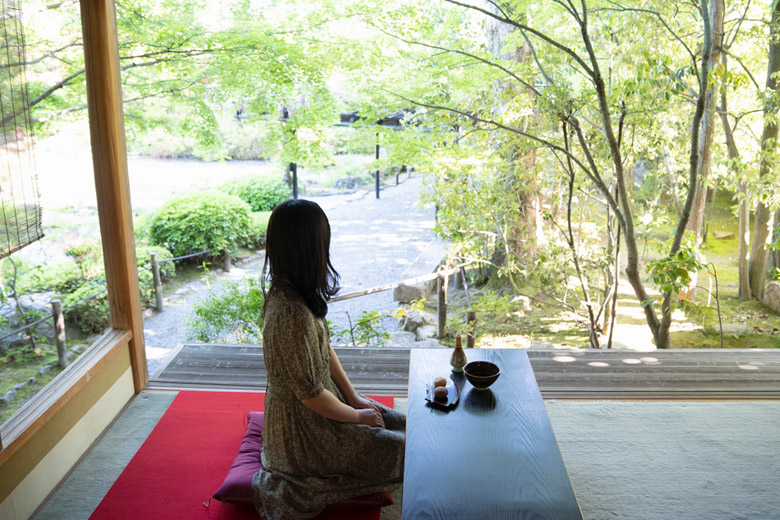
Interview with Reverend. Daiko Matsuyama, Deputy Head Priest of Taizo-in Zen Buddhist Temple, Myoshin-ji

Taizo-in Zen Buddhist Temple has designated cultural properties and beautiful gardens that change by the seasons spreading across its precincts. Rev. Daiko Matsuyama, Deputy Head Priest, hopes that the minds of the visitors to Taizo-in Temple will “leave behind their daily lives when they are here”.
Born and raised in Kyoto, Rev. Matsuyama grew up with a keen appreciations of nature and culture, and now hopes to share their “authentic flavor”. He has been appointed as Kyoto Travel Omotenashi Ambassador since 2011 and a visiting lecturer at Stanford University since 2018, crossing the boundaries between countries and actively sharing and communicating Japanese culture.
The Splendor of each season and the serenity of Zen exist in harmony at Taizo-in Temple
Taizo-in Zen Buddhist Temple in the Hanazono area of Kyoto was founded over 600 years ago. It is the oldest among the over forty sub-temples within the Myoshin-ji Temple Complex, the headquarters of the Rinzai Sect of Zen Buddhism. The temple has a National Treasure ink painting Hyonenzu “Catching a Catfish with a Gourd” (the original is in a museum now), a dry landscape garden designed by master painter Kano Motonobu about 450 years ago, Motonobu no Niwa, and a pond garden known as a mid-twentieth century masterpiece, Yoko-en.

National Treasure Hyonenzu’s replica (Taizo-in)
While many areas in the Myoshin-ji Temple Complex are not open to the public except for during special admission periods, Taizo-in is open year-round, allowing visitors to enjoy the beauty of the gardens that take on different charms as the seasons come and go.

The Garden of Yin in autumn (Taizo-in)
In search of ways to offer the “true flavors” with their benefits
When Rev. Matsuyama was a young child, enjoying matcha that he whisked in a bowl himself, after coming home on his preschool bus, was part of his everyday life.
“According to a person who researches fragrance in Osaka University’s Faculty of Medicine, the best way to prepare matcha and gain the relaxing effect of its fragrance is to whisk it. Of course, the matcha they serve in shops is delicious, but the fragrance of the moment it is prepared using a whisk is by far the most luscious and important” so he tells the merit of practicing it yourself.

Rev. Matsuyama readily expresses his fondness for traditional Kyoto sweets as well: “We’ve had Oimatsu’s Kyogashi sweets available at Taizo-in from before, but I wished I could have everyone taste freshly made Kyogashi, too.” He believes that their authentic flavor makes a world of difference.
A special experience that resonates with all five senses
Immersing yourself into the culture and thought of zen buddhism at Taizo-in temple is made all the more pleasant by the stimulation that occurs in all of your senses. Guests who visit Taizo-in for the special guided tour additionally have the opportunity to sit down to matcha tea and sweets and relax while gazing at the view of the temple garden. The sound and sights of the garden, the smell, taste and touch of the delicately crafted sweets and tea all contribute to creating a special atmosphere.
“I hope people can leave their everyday lives behind for a moment, immerse themselves in their own senses and take themselves on a spiritual retreat,” said Rev. Matsuyama.

Taizo-in Zen Buddhist Temple
Taizo-in is a Zen Buddhist temple first founded in 1404 and the current temple structure dates back to 1597. It is the oldest among the sub-temples of Kyoto’s largest Zen temple complex, Myoshin-ji. It is known for one of Japan’s oldest ink paintings, Hyonenzu, and its dry landscape garden created by the master painter Kano Motonobu, called Motonobu no Niwa, which are both designated cultural properties, and the Yoko-en pond garden that is a mid-twentieth century masterpiece.
Address: 35 Hanazono Myoshinji-cho, Ukyo-ku, Kyoto City 616-8035
June 1st (Tue), 2021
Website: http://www.taizoin.com/en/
Special plan
Private Access to Myoshin-ji Taizo-in for Special Temple Tour and Zazen Meditation —Matcha Included

Overview
Experience a private before-hours or after-hours visit to Taizo-in, part of Myoshin-ji, one of Japan’s largest Zen temple complexes.
Deputy head priest Daiko Matsuyama, a Zen priest active in Zen Buddhism around the world, is your guide through the temple, its legendary garden, and a zazen meditation experience.
This Wabunka original plan offers authentic Zen spirituality with a temple monk in the temple that cherishes seasonal ephemerality.
*From March 20th to June 30th and September 20th to December 10th, there will be an additional fee of 50,000 yen per group due to the peak season.
Key Features
- Dive deep into the world of Zen with instruction from Deputy Head Priest Matsuyama, a globally active figure who has met with the former Catholic Pope.
- Practice zazen meditation in August and invigorating air of early morning or evening.
- After the experience, enjoy matcha and traditional confectioneries while taking in the garden.
Fee : 150,000 yen for a group (Private lesson, minimum of 1 person)
*Required time: approximately 90 mins.













